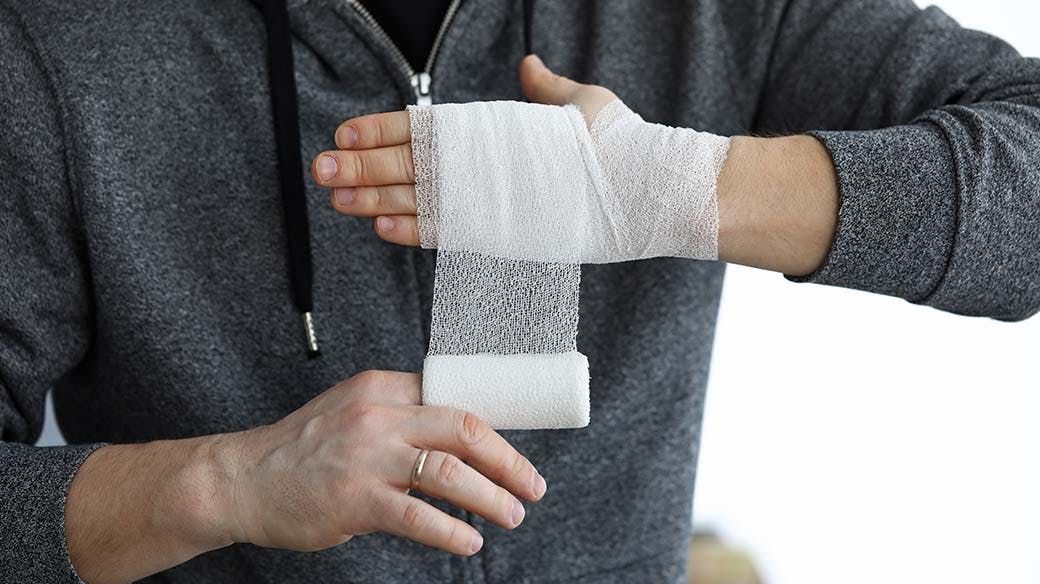Accidents can happen any time. Burns and scalds are accidental injuries that every family and individual have to be prepared for. So let’s look at first aid and treatment of burns and scalds so you’ll be able to handle the situation if needs be.
3 degrees of severity of burns and scalds
The key to determining the severity of a burn or scald is the depth of the wound. There are three levels as follows:
· Level 1: burns to the outer skin or epidermis. If there is no inflammation, these will mostly heal without leaving a scar.
· Level 2: burns to the outer and inner layers of the skin, in other words the epidermis and adjacent dermis. If there is no infection, such wounds also heal without leaving a scar.
· Level 3: deep burns that reach subcutaneous tissue and nerves. Such wounds are likely to become severely infected making full recovery difficult.
First aid
When anyone is burned or scalded, first aid procedures should be followed before taking the patient to hospital for treatment. First aid procedures differ according to the severity as follows:
· Level 1: Start by cooling the burned or scalded skin. Apply cold water to the wounded area for at least 20 minutes or until the pain subsides. Then cover the wound with gauze or a clean cloth. If you see any blisters, see a doctor.
· Level 2: Same as Level 1. However, if the wound is about 10-15 palm widths, the injured person should be taken to hospital immediately. While you’re waiting for an ambulance, remove or cut off the clothing in the area of the wound. Remove any jewelry and try to raise the wounded area above heart level to help the blood return to the heart.
· Level 3: Get the injured person to hospital as soon as possible. Meanwhile, if the wound is 10-15 palm widths or more, do levels 1 and 2 first aid as well.
Treatment
Initial burn or scald treatment you can do yourself entails cleaning the wound with plain water. If the wound is dirty, use mild soap to clean it, then soak the wound in room temperature water or let water flow over it for at least 5 minutes but not more than 20 minutes. Next, cover the wound and take the injured person to hospital.
As for treatment at the hospital, the doctor or nurse will start by cleaning the wound again. Next they will assess the depth and width of the wound. If there is any necrosis, an excision is done, closing the wound by applying a cream or ointment and/or suitable dressing. The wound will be cleaned and assessed every 1-4 days, depending on the condition. The injured person may also be prescribed antibiotics and painkillers to take as needed. Superficial wounds heal in 1-3 weeks. Deep wounds usually require covering the area with skin taken from another part of the patient’s body which will help the wound to heal faster.
Possible complications
Complications from burns and scalds likely to occur in the first two days to one week include dehydration, shock and infection. Larger wounds are at particular risk of infection as they are difficult to clean thoroughly. As such, it is important to avoid exposing the wound to dust or pets.
As ever, the best remedy is prevention. Always be careful to prevent increasing the risk of an accident, especially when there are any children around. Burns and scalds are much more traumatizing to them than to adults.
Accidents can happen any time but if we know how to do the requisite first aid, we can deal with the situation safely.
Krungthai-AXA Life Insurance customers who are interested in health care can check out other medical and health topic articles at https://www.krungthai-axa.co.th/th/health-advisories.
References
· Bangkok Hospital
https://www.bangkokhospital.com/content/burns
· Faculty of Medicine, Siriraj Hospital
https://www.si.mahidol.ac.th/sidoctor/e-pl/articledetail.asp?id=832
· Pobpad website
https://bit.ly/3S3oyHy
· Mission Hospital
https://bit.ly/3bJLuvf


